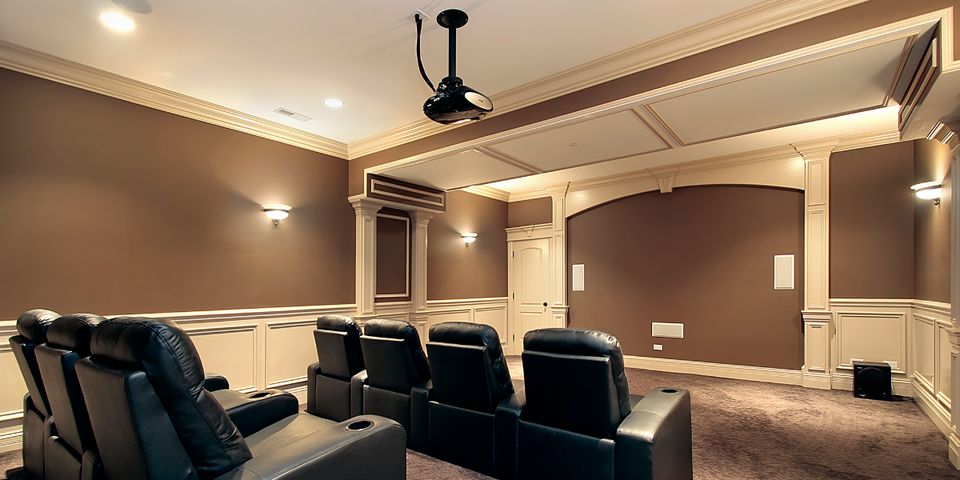5 Elements to Consider When Buying a Projector for Your Home Theater

When phone screens and televisions don’t provide the level of entertainment you want, upgrading to a projection system can enhance home theater design. However, with so many types of equipment on the market, it’s not always easy to know which system is best for your needs. To help you get the right fit for your viewing, here are five factors you’ll want to keep in mind when shopping for a new projector.
What Features Should I Focus on for a Home Projection System?
1. Light Source
For crisp viewing at home, it’s best to choose a model with a light source that has 1000 ANSI Lumens or higher. You’ll also want to consider the light type. Systems that use a lamp can last anywhere between 3000–5000 hours before the lamp needs to be replaced—which can be costly. Systems with LED lights are often priced higher but deliver a much longer service life, up to 20,000 hours.
2. Image Quality
Projectors with a display resolution of 1920x1080 will clearly present most media—including Blu-Ray and HD content. However, if you’re using the equipment to display static images or entertain the kids, you might be fine with a lower resolution.
Systems should also have an adequate contrast ratio to ensure colors are delivered at their intended depth. While a 2000:1 contrast ratio or higher is ideal, anything 1500:1 or above should provide good coloring.
3. Distance

Models with a short-throw or adjustable distance can help display large images in smaller spaces. By contrast, long-throw lenses are ideal for those with a spacious home theater design.
If you’re opting for portability, it’s best to choose a tripod screen that can be positioned wherever needed. But if the equipment will remain stationary, you can paint the target wall with specialized projector screen paint or install a drop-down screen.
4. Aspect Ratio
To ensure all images are balanced and sized properly, you’ll want to choose equipment with the standard 16:9 aspect ratio. If possible, however, select a model with adaptable ratios so that you can display older media or computer monitors with ease.
5. Connection Ports
Before buying a projector, check to make sure it has all the input ports needed to connect to your media equipment. For flexible connectivity, look at models with HDMI, VGA, and DVI ports. You’ll also want to ensure connected equipment can be wired directly to your surround sound system to improve the audio experience.
Home theater design doesn’t have to be a hassle when you enlist the services of Integrated Image and Sound. Serving clients in Plano, TX, this specialist provides reliable projector mounting to ensure a clear, comfortable viewing experience. Understanding every aspect of home theaters, this team can also wire for seamless surround sound and install peripheral equipment in an organized fashion. Visit this company online to learn more about their audio and video solutions, or call (214) 773-0459 to request an estimate.
About the Business
Have a question? Ask the experts!
Send your question

